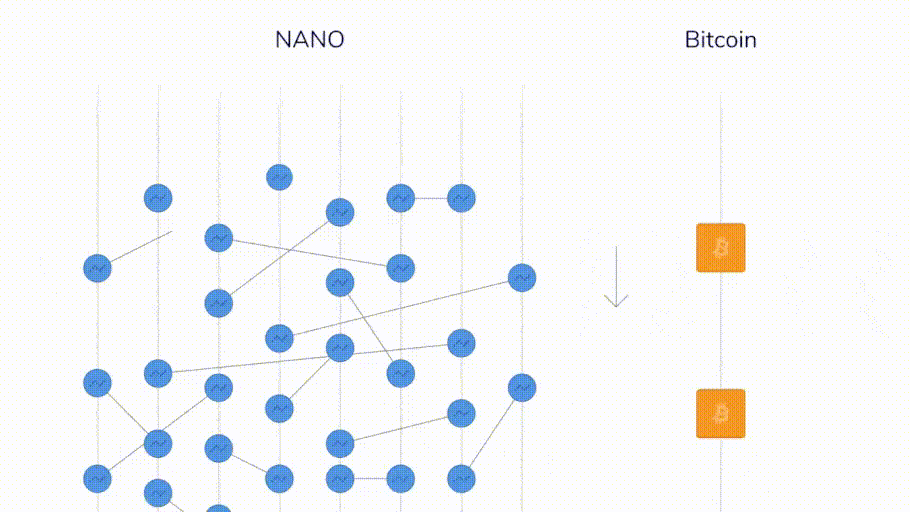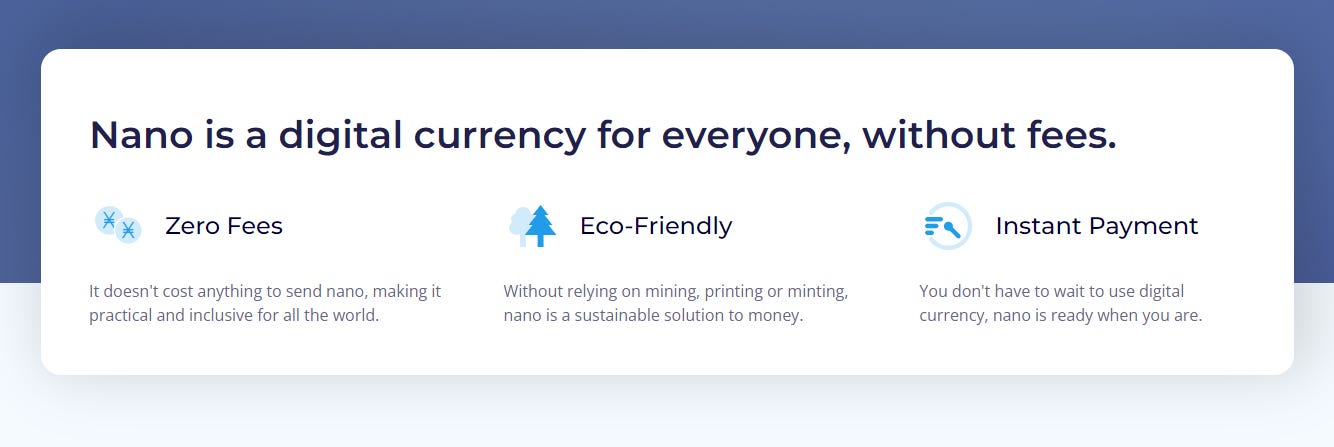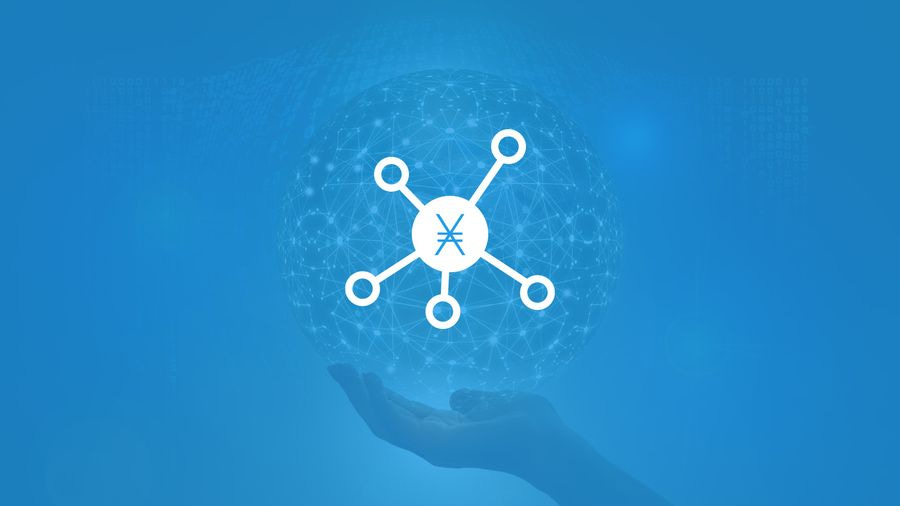The basics of Nano: instant, zero fee transactions
How Nano manages to offer instant zero fee transactions making it an ideal medium of exchange, while also being a fundamentally strong store of value.
Try it out yourself
Actions speak louder than words. Many crypto claim to be fast and cheap. Nano is truly instant and zero fee, which you can verify for yourself within 2 minutes.
Install Natrium (Android here, iOS here).
Visit a Nano Faucet.
Fill in your Nano_ address and hit send.
To verify that you can instantly send your Nano again you can send it to NanoGPT, or open a second wallet on the side like www.nault.cc in your browser or Nautilus (Android or iOS) as a second app on your phone. By doing so you can verify for yourself that you can instantly send this tiny amount without fees paid. Nano tends to transfer faster than you can switch screens, so you can also see the transaction right afterwards on a block explorer.
Sending to yourself like this doesn’t seem impressive, but the transfer you just did is possible from and to anyone, anywhere, anytime, with no one able to stop your transfer and not a cent paid in fees. It’s secure, borderless and uncensorable money, open to anyone.
How does this work?
When you do a transaction from your wallet (Natrium, Nault, Nautilus) several things happen.
Your wallet creates a “block”, which states your intention to send X Nano to Y address, and signs it with your private key (a signature proving you own the account).
The wallet publishes this block to the network by sending it to other nodes in the network (servers or computers running the Nano software).
Every node checks your transaction for validity. Does your wallet contain the amount of Nano that you are trying to send? Is the address you are sending to valid? Did you attach a correct hash (a lightweight calculation that is required to send a transaction)? Is the signature you signed with correct? If everything checks out, nodes send a message to other nodes certifying that they have checked your transaction and found it to be correct.
If a vote-weighted majority of the network (67%) verifies that your signature is correct, the nodes running the network see the transaction as confirmed and add it to their database containing a record of all transactions done.
All of this happens in under a second without a cent paid in fees.
A deeper dive
Nano uses a Block Lattice. Instead of competing for space in a single block, every user has their own chain that they publish blocks to.
Nano combines the block lattice architecture with Open Representative Voting (ORV). In Open Representative Voting, everyone that wants to can set up a node. Every Nano holder votes for a node using their Nano balance, where 1 Nano = 1 vote.
When a node reaches a certain threshold of votes it becomes a Principal Representative. Anyone can run a node and therefore anyone can be a Representative, and any Nano holder can change their vote at any time.
As soon as someone adds a block to their own chain, these Representatives immediately check it to see whether it’s valid. One Representative might represent 0.2% of the network’s total voting power, another might represent 1.1%.
When >67% of vote-weighted Representatives verify the transaction as being valid the transaction is seen as confirmed. Representatives and nodes mark the transaction as approved, add it to their record of all transactions and account balances, and move on to checking the next transaction.
A focus on efficiency
Every node checks and confirms transactions as quickly as possible. Because of this, Nano’s speed and scalability is not limited by any specific software rules but purely by hardware, internet throughput and latency.
Internet throughput is a limiter for every cryptocurrency in the sense that you can only verify transactions as quickly as you can download them. Transactions in cryptocurrency and in Nano are rather small with ~2000 of them fitting into 1 MB.
Internet latency is what determines the minimum time it takes to confirm a transaction. Transactions have to be sent to all Representatives, which then perform internal checks, after which they message the other Representatives about their judgment on whether the transaction was valid.
When it’s seen as valid by a vote-weighted 67% of the network, that message is sent back to all Representatives and nodes, who then mark it as confirmed.
Because of this Nano’s main limiter in terms of confirmation speed is the speed of light. It takes 133 milliseconds for light to circle the Earth, Nano transactions confirm in an average of 371 milliseconds (or 0.371 seconds).
Hardware is another factor in how quickly and how many transactions can be confirmed. A gaming laptop’s processor is able to process more data more quickly than that of an old mobile phone is.
Many cryptocurrencies have a hardcoded block size effectively limiting the number of transactions that can be done per second. Nano’s software comes with no such limits. The throughput and speed of the network depend purely on the strength of the nodes that are run, and in practice on the strongest/fastest 67% of the network. Because of this, even without any software changes Nano’s maximum throughput increases over time due to improvements in hardware and internet speeds.
This focus on efficiency also means that Nano is extremely energy efficient. There is no mining like in for example Bitcoin, and no node or Representative has the incentive to waste energy. All that anyone is interested in is confirming transactions securely, quickly, and efficiently.
Aligning store-of-value incentives
Nano offers zero fees and instant transactions while also being completely fixed supply. No more Nano can ever be created. 1 Nano now will be 1 Nano a hundred years from now, there can never be any debasement of your money.
A lack of fees also means that while Representatives have an incentive to set up a node (direct access to the network, ensuring the network remains live, protecting your own investment) there is no incentive for Representatives to grow too large.
In Mining (Bitcoin’s consensus system) miners want to mine as many blocks as possible, since every block rewards them with revenue. They try to minimize their costs through economies of scale, growing ever larger to capture ever more revenue.
While this makes sense for miners, the reason cryptocurrency is valuable is because it is decentralized. No one can stop you from doing a transaction, no one can censor anyone else. That is, unless there is a single entity or small group with a majority of the consensus power.
In Nano every holder has the same goal. They want their Nano to be valuable, to remain valuable, and to become more valuable. Concentrating voting weight (consensus power) into fewer entities decreases value, therefore every Nano holder has an incentive to spread out the voting weight between different Representatives.
If any node or Representative is getting too big or actively trying to get more people to vote for them beyond a reasonable minimum, Nano holders would see it as suspicious and vote for other Representatives. There are no monetary rewards, so there is no valid reason for Representatives to want more concentration of power.
Incentives are aligned between all Nano holders, leading to ever greater decentralization and therefore security over time.
The vision of Nano
Nano is intended to be digital money for the modern world. It was freely given away to anyone willing to solve captchas. Because of this, Nano was distributed broadly, mostly to people in poorer countries.
Because of its feeless nature, it’s well suited for lower-income countries. Because of being instant, it works as a medium of exchange, as money. Because there are no fees and there is no inflation, no money is lost when either storing value in Nano, or when using Nano.
The vision of Nano is broad. It allows for cheap remittances. Foreign workers pay an average of 6.4% in fees to transfer money home. Nano can do this far more efficiently, both at lower cost and faster.
It allows merchants to start accepting payments anywhere in the world, instantly, without fees. It enables streamers to receive feeless tips, enables anyone to access ChatGPT and other AI models without requiring an account or subscription.
It enables anyone suffering from inflation to securely store their money in a currency whose supply can’t be increased. It allows charities to take donations from all over the world. This means less money going to middlemen, and more money arriving directly where it’s needed.
Nano makes money efficient, frictionless, secure and borderless.
As a final reminder and since you skipped this instruction the first way around: don’t trust, verify.
Install Natrium (Android here, iOS here).
Visit a Nano Faucet.
Fill in your Nano_ address and hit send.
For questions, head over to the Nano community on Reddit, Discord or Twitter.







